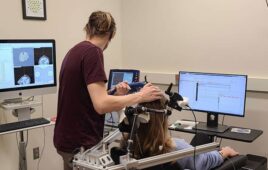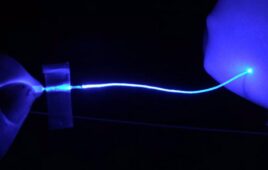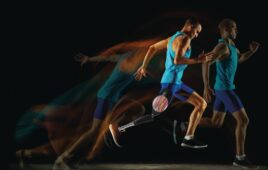A team from Oxford’s Nuffield Department of Clinical Neurosciences, led by Professor Heidi Johansen-Berg and Dr. Charlotte Stagg, studied the use of transcranial direct current stimulation (tDCS) to support rehabilitation training. The technique involves placing electrodes on the scalp to pass a constant low current through a particular area of the brain.
In this case, the team used a variant called ipsilesional anodal tDCS, where a positive (anodal) current is applied on the side of the brain where damage has occurred. Anodal stimulation has previously been shown to increase the learning of motor skills in healthy people. The hope was that this effect could also be demonstrated in stroke patients, using tDCS to reinforce training that helps patients relearn how to use their body.
Professor Heidi Johansen-Berg said: ‘For stroke patients, longer and more intensive training leads to greater recovery. However, cost and staff availability limit what can be provided. That means that there is increasing interest in therapies that can be used to boost the effects of training.’
The study included twenty-four volunteers who had had a stroke affecting their hand and arm function, split into two groups. Both groups were given nine days of motor training. One group had tDCS during the training sessions, while the other group acted as a control: they were fitted with electrodes but did not receive tDCS.
Before, and at various times up to three months after the training, the volunteers’ motor skills were assessed using established clinical measures to see how much they had improved.
Professor Johansen-Berg said: ‘The assessments before the training were used to establish a baseline score for motor skills. Further assessments could then be used to determine what improvement there was above that baseline.
‘Three months after training, the group that had received tDCS had improved more on our clinical measures than those in the control group. This showed that the patients who had received tDCS were better able to use their hands and arms for movements such as lifting, reaching and grasping objects.’
MRI scanning also showed that those who had had tDCS had more activity in the relevant brain areas for motor skills than the control group.
Study volunteer Jan said: ‘The training was exhausting – like being in the gym every day, but it was huge fun. Even after the first session I felt as if I could do more, even though I was knackered. That made me go back every day, and I found it easier and easier. [The stimulation] didn’t hurt – more like a mild tingle or a static electric shock right on the top of my head. The worst part was that my head itched afterwards!’
She added: ‘I have definitely improved and benefited. People who haven’t seen me say ‘wow – you can move better now’. It definitely helped. I’m just sorry I can’t continue with it. It was so nice to meet a team who had such positive attitudes and who told me it was not too late to improve.’
The research team conclude that there is positive evidence for the use of tDCS to aid stroke recovery but caution that the technique must be proved to have long term benefits not only in clinical measurements but also in the ability to carry out tasks important to daily life. Larger studies, they say, will be needed before this approach could enter routine clinical care.
Find more information on the study here.




